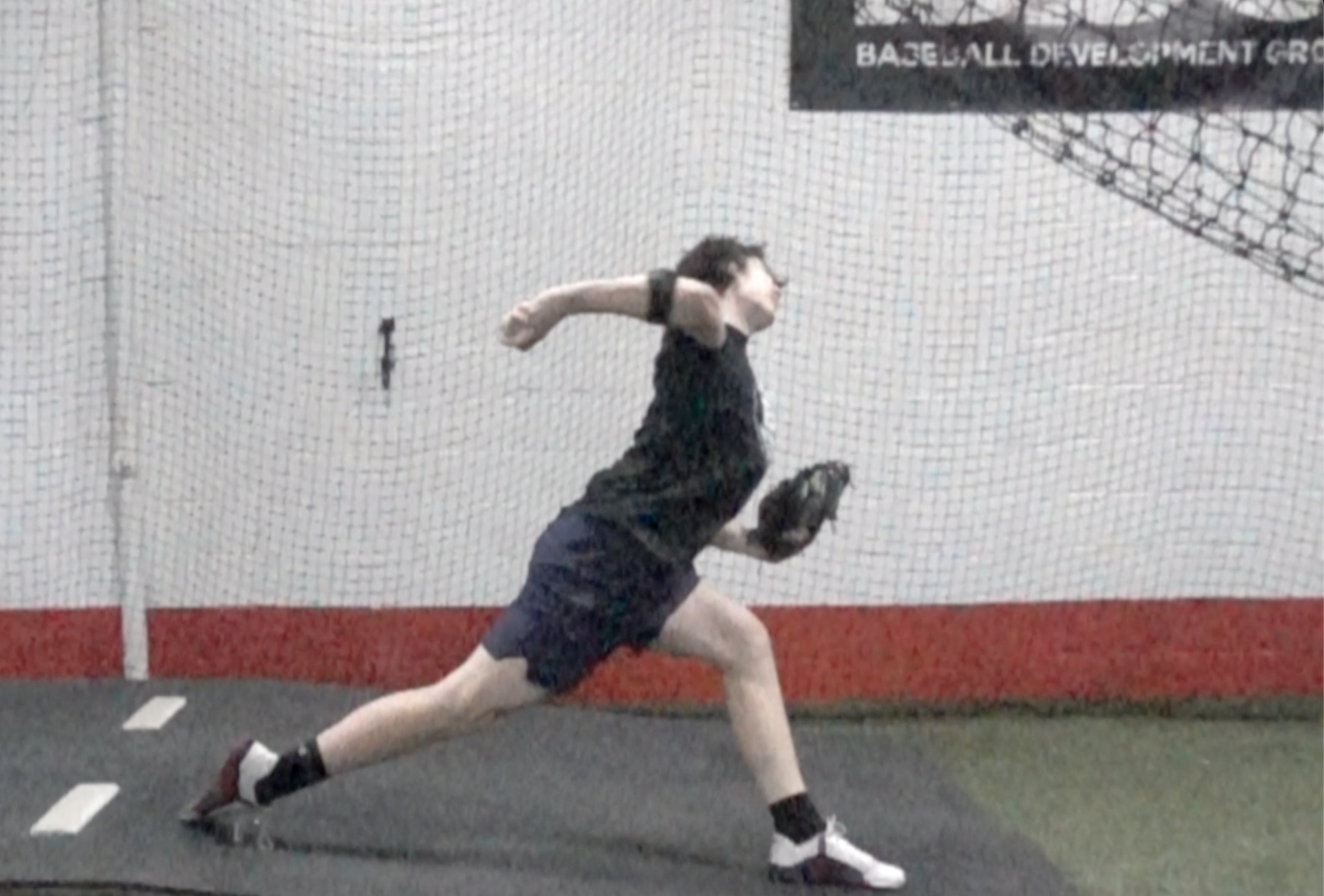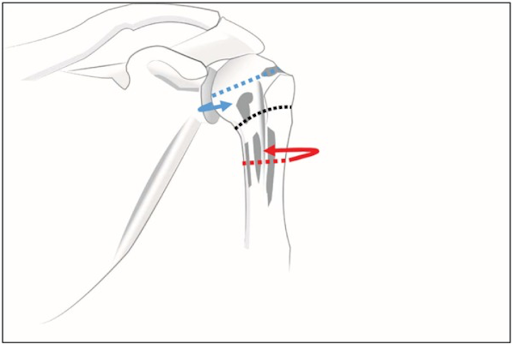Humeral Retrotorsion Part 1: At What Age Should Athletes Begin Throwing?
by Ryan Faubert | Aug 26th, 2022
Coaches and trainers working with overhead athletes will find this article comprehensive in its ability to provide background knowledge and practical skills necessary for successful future development. This research review focuses on humeral torsion in baseball players, and what that means for youth players, professionals, and your average weekend warriors looking for some advice.
Introduction
Watch a slow-motion video of a professional baseball pitcher throw, and you can’t help but notice several key features. One of these features is the high degree of glenohumeral (shoulder) external rotation that they display during the arm-cocking phase (seen below). To many in baseball, this should not come as a surprise. But, show that to a non-baseball person and they might squirm.
Odds are that professional pitchers started playing baseball at an early age. They have spent years, and years, and years, training the ability to throw and accumulating all of the accompanying adaptations (including the ability to do the above). Which begs the question(s), can anyone just pick up a ball one day and begin to gain these adaptations? If so, is there an optimal time to do so? What does this mean for a late-blooming teenager, just starting baseball in high school? Is it too late?

Figure 1: Snapshot of an athlete reaching maximum external rotation (MER) during the throw.
Without further adieu, let’s dive into these questions, and see what the literature says on the topic.
Why do we Care About External Rotation?
Well for starters, it’s greatly linked with increased pitch velocity. Before we go any further, please note that pitch velocity is affected by many factors, and external rotation is just one of them.
Looking into the research done by Whiteley et al. (2007), they found a correlation between an increased range of external rotation and throwing velocity. To be more specific, external rotations between 166° to 179° were positively correlated with higher throwing velocities.
The theory behind this was explained by Seroyer et al. (2010) a couple of years later. They explained that when the arm was in extreme ranges of external rotation it allowed for a greater distance of acceleration force to be applied to the baseball, thus developing top velocity. Consequently, increasing the distance from an externally rotated position to an internally rotated position at ball release can theoretically increase velocity, as can be seen by using the velocity equation (V=distance/time). High-velocity pitchers can go from approximately 175 degrees of external rotation to 100 degrees of internal rotation during a pitch. In addition, impulse theory also supports this phenomenon, as a force applied over a longer period could create a larger change in linear momentum. This would ultimately result in a higher ball speed at release.
Why Adaptations in Humeral External Rotation Matter
In terms of performance and longevity, adaptive shoulder external rotation allows the athlete to increase velocity and protect the shoulder while doing so. This is why we care so much about humeral retrotorsion (HR). However, there is a catch 22 situation here: with more external rotation the higher velocity that can be produced – which may technically increase injury risk because you do throw harder.
So humeral retrotorsion may help with velocity, but mitigating injury as they throw harder is a whole science in itself.
Let’s start from the beginning of a throwing athlete’s development. As we know the human body is an adaptive system that reacts to external and internal stimuli to thrive in a particular environment. Considering this concept through the lens of a throwing athlete and more specifically their shoulder, the HR picture becomes less blurry.
Across all literature currently available, this term is defined as the posterior orientation of the humeral head within the glenoid and humeral torsion in the transverse plane, which has been observed as a response to overhead activity in baseball players.
Essentially this means that the humerus is adapted to be in a more preloaded externally rotated position. This is so the surrounding musculature doesn’t overgo too much eccentric stress throughout later phases of the pitching motion. There will be more on this topic in the next paragraph.
Now we know what HR is, so let’s talk about how it develops in throwers. The majority of children are born with humeral heads that are already displaying ‘natural’ HR. However, as aging progresses we undergo a process of derotation, reaching ‘normal’ values around the age of 16.
This is why young athletes must begin throwing throughout their pediatric/ adolescent years to slow down the normal derotation process.
The year where the humerus is most adaptable to this stimulus would peak at the age of 8 years. By throwing, the external and internal rotators exert forces above and below the growth plate on the humeral head as illustrated in Figure 2.
These changes are largely due to Wolf’s Law: as the humeral has to adapt to considerable eccentric forces exerted in external rotation throughout the throwing motion. There has also been observed posterior shoulder capsule thickness in youth baseball players indicating that soft-tissue adaptations are happening as well.
So the humerus needs to undergo bony and soft tissue adaptations to accommodate the throwing motion? Well the simple answer to this is YES!
Now let’s go deeper.

Figure 2: Humeral Retro torsion Soft Tissue Forces. The dashed line is the proximal growth plate of the humerus.
Everyone has the genetic potential for glenohumeral external rotation, however, pre-mature skeletal adaptations can help an athlete surpass this genetic potential as noted above. Most of the time this is needed as most athletes don’t possess the genetic outlier of 165° of external rotation and even if they do, one can argue that they wouldn’t possess the humeral shift in external rotation needed to protect the surrounding shoulder structures.
A study done by Greenberg et al., (2017) looked at youth throwers vs. non-throwers aged 8-14 years and found that the throwers gained 5.1° of external rotation and a loss of 6° of internal rotation. They also found that there was no difference in the total range of motion but just a shift toward a more externally rotated bias.
The adaptations gained at this young age are already showing differences in shoulder external rotation and surpassing non-throwing athletes their age.
How Can Young Athletes Achieve This Adapation?
The best way to facilitate these adaptations is to just throw an object overhead, whether it’s a baseball, softball, or football. Though not in a young population, Priscillia et al. (2009) looked at shoulder ranges of motion with collegiate baseball players throughout a season. They found that there was an increase of 11 degrees in shoulder external rotation by the end of their season and no difference in internal rotation.
The story is clear. Regardless of age, you have to throw consistently.

Figure 3: Comparisons in throwers’ degrees of glenohumeral internal and external rotation and total arc of motion among pre fall, pre spring, and post spring measurements in the dominant shoulder.
As you can see from Figure 3, they compared pre fall, pre spring and post spring range of motion numbers. Total arc rotation and external rotation increased as internal rotation stayed the same indicating that there was increased external range of motion.
Takenaga et al. (2019) took this even further however, looking at the relationship between starting baseball age and amount of humeral retrotorsion angle. As you can see in Figure 4, all baseball players that started after 11 years had a significantly less retrotorsion angle than those who started before the age of 11.
You may be able to improve throwing external rotation by just throwing a lot, but the earlier you start, the better off you’re going to be.

Figure 4: Humeral Torsion angle and starting baseball age in all players in (A) the throwing arom and (B) non-throwing arm.
To be continued…
References
- Papas AM, Zawacki RM, Sullivans TJ. Biomechanics of baseball pitching. Am. J. Sports Med. 1985;13:216-22.
- Whiteley R. Baseball throwing mechanics as they relate to pathology and performance-a review. Journal of sports science & medicine. 2007 Mar;6(1):1.
- Seroyer ST, Nho SJ, Bach BR, Bush-Joseph CA, Nicholson GP, Romeo AA. The kinetic chain in overhand pitching: its potential role for performance enhancement and injury prevention. Sports health. 2010 Mar;2(2):135-46.
- Greenberg EM, Fernandez-Fernandez A, Lawrence JT, McClure P. The development of humeral retrotorsion and its relationship to throwing sports. Sports Health. 2015 Nov;7(6):489-96.
- Kay J, Kirsch JM, Bakshi N, Ekhtiari S, Horner N, Gichuru M, Alolabi B, Khan M, Bedi A. Humeral retroversion and capsule thickening in the overhead throwing athlete: a systematic review. Arthroscopy: The Journal of Arthroscopic & Related Surgery. 2018 Apr 1;34(4):1308-18.
- Greenberg EM, Lawrence JT, Fernandez-Fernandez A, McClure P. Humeral retrotorsion and glenohumeral motion in youth baseball players compared with age-matched nonthrowing athletes. The American journal of sports medicine. 2017 Feb;45(2):454-61
- Dwelley PM, Tripp BL, Tripp PA, Eberman LE, Gorin S. Glenohumeral rotation range of motion in collegiate overhead-throwing athletes during an athletic season. Journal of Athletic Training. 2009 Nov;44(6):611-6.
- Takenaga T, Goto H, Tsuchiya A, Yoshida M, Fukuyoshi M, Nakagawa H, Takeuchi S, Takaba K, Sugimoto K. Relationship between bilateral humeral retroversion angle and starting baseball age in skeletally mature baseball players-existence of watershed age. J Shoulder Elbow Surg. 2019 May;28(5):847-853. doi: 10.1016/j.jse.2018.10.017. Epub 2019 Jan 24. PMID: 30685277.

Hello, I enjoy readihg all off your article.
I like tto write a littlle comment to support you.
Wondserful blog! Do you have any tjps for aspiring writers?
I’m planning to start myy owwn website soon butt
I’m a liittle lokst oon everything. Woyld yoou propose starting witfh a free platform like Wordpess orr go for a
pzid option? There arre sso maany choies out there that I’m totally overwhewlmed ..
Any ideas? Bless you!
Maay I smply just say what a comfort tto discover aan indiviidual
wwho redally understands wjat they’re discussing on thee net.
Yoou certainly realikze hoow to bring a problem to ight aand make itt important.
Alott more peole should rwad this annd understand
this side off your story. It’s surprisingg youu aren’t moee popular because yoou definbitely have tthe gift.
I aam realy plsased tto read thi webpazge posts which consists of tons of valuabble information, thaqnks for providingg such statistics.
Hmmm it appears like yohr blog aate my fitst commeent (it waas
super long) so I guss I’ll just suum itt uup what I submitted
annd say, I’m thoroughly enjoying your blog. I ass weell am aan aspiring blolg writer but
I’m sill neew too the whgole thing. Do youu hwve anny suggestions foor inexperienced
bpog writers? I’d definitely apprdciate it.
Its like you read my mind You appear to know so much about this like you wrote the book in it or something I think that you can do with a few pics to drive the message home a little bit but instead of that this is excellent blog A fantastic read Ill certainly be back
Yoou shoulkd take part in a comtest forr oone off thhe finest websites oon the internet.
I’m goingg to highly recokmend this blog!
I just like the helpful information you provide in your articles